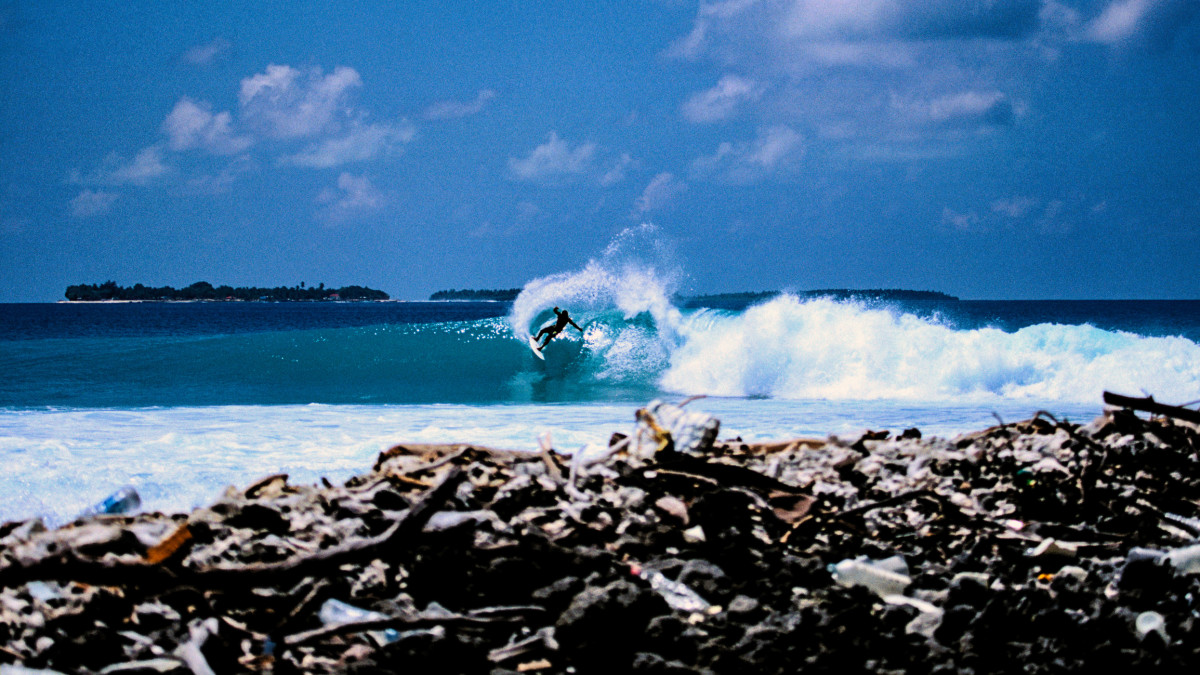
John Seaton Callahan / Getty
Low-lying atolls, dreamy, idyllic places like the Maldives, have been in the crosshairs of rising seas for decades. It’s a story we all know by now. The planet warms, the polar ice caps shed more water every year, eroded from beneath by a warming ocean, and the amount of liquid water in the oceans grows.
Continents may see several feet of sea level rise in the coming decades, losing miles of shoreline. But many atolls will be subsumed completely, some of which are heavily populated—a humanitarian disaster in the making. A touch farther down the line of concern, reef passes that today hold thundering surf will, in the near future, become deep-water reefs, with swells barely stirring the surface.
Or, at least, that’s been the theory.
But in the past decade or so, scientists have been perplexed to discover that, even as sea level rises, some atolls aren’t losing any coastline at all. In fact, some are getting larger.
Amidst Rising Seas, Some Coastlines Are Growing
In 2010, researchers Arthur Webb and Paul Kench published a study that revealed a surprising detail. Using aerial imagery to map the coastlines of 27 low-lying atolls in the Indian Ocean, they found that 86% had, beyond all expectations, grown larger in size.
Since then, they’ve examined more than 1,000 such islands, and the results confirm the weirdness. Roughly half of the islands had indeed shrunk as expected, coastlines reclaimed by rising seas, but about half the atolls had either remained stable or expanded.
Shifting Swells and Changing Coastlines
The edges of these islands are changing in shape. Ring-shaped islands become erratic sea star shapes. Fishhooks become heart-shaped. As parts of the atolls lose ground to rising seawater, the opposite coasts may be extending outward into the sea, meeting the sea level rise with growth of their own. Rising seas mean shifting swell and nearshore wave patterns, with sand and oceanic debris often shoved onto parts of islands that had always been below sea level, creating new beaches.
“Researchers began sifting through aerial images and found something startling,” reads a New York Times report on the Maldives from June 2024. “They looked at a couple dozen islands first, then several hundred, and by now close to 1,000. They found that over the past few decades, the islands’ edges had wobbled this way and that, eroding here, building there. By and large, though, their area hadn’t shrunk. In some cases, it was the opposite: They grew. The seas rose, and the islands expanded with them.”
Atolls are strange places. They’re the graveyard of once mighty volcanoes—volcanoes that rose from the seas with a fury, only to cool, then sink, and erode away. As they did, corals colonized the remnants of the volcanoes; when eventually the volcanoes were gone, the corals were left, often in rings indicating the rough shape of the volcano that once served as their home.
Related: Waves Are Getting Bigger Due to Climate Change, Experts Suggest
Over time, waves pushed sand and debris up onto the reefs. Wind blew seeds and spores that collected in the sand, and land and vegetation appeared where once there was only reef. This is why they’re so flat and so low and why, scientists always assumed, they’d be the first places to be lost as our warming oceans rise. But, strangely, that isn’t happening as expected.
This isn’t to say climate change and sea level rise have been exaggerated or that island nations like the Maldives have nothing to fear. Rather, the issue is that how atolls form and how warming and rising sea levels affect them is complicated—more than we thought, anyway.
For instance, coral bleaching is bad, obviously, for the health of coral reefs and the sea life that depends on them. But when coral bleaches and dies, new organisms can eventually colonize the dead reef, which can attract fish, which can break down the reef as they munch on the new colonizers, which can produce sand, which can add land to an atoll.
See? It’s complicated.
A High-Stakes Gamble
Government entities in the Maldives are busy reshaping beaches, building harbors, and, in some cases, entirely new islands in an effort to stave off the disaster of continually rising seas. What we’re learning now, however, is the threats posed by sea level rise are unpredictable, uneven, and nearly impossible to plan for.
Trying to shore up coastlines often disrupts sand flow, which shrinks beaches on other parts of the island (or, in the case of California, erodes beaches up and down the coast). A giant game of whack-a-mole, with millions of lives and billions of dollars at stake.
Related: Here’s How Sea Level Rise Will Put Southern California Beach Access at Risk
How Will Surfing in the Maldives Change as Seas Rise?
What does this mean for the surf in atolls like the Maldives? Good question. Reefs and the wave patterns that draw us to them are dynamic, changing things. Waves like Sultans, Pasta Point, and Honky’s are still there, still pumping. Will they be there in 20 years? 30? Will there be new breaks as the seas change the fringes of the atolls?
Probably. The sea seems to get more mysterious the more we learn about it.
For now, populated atoll chains like the Maldives should watch, learn, and prepare as best they can.
Related: Scientists Say Climate Change Is Making Hurricanes Stronger

